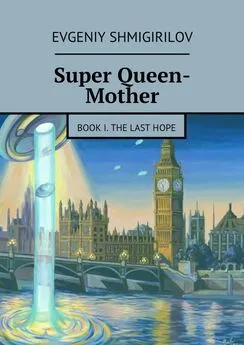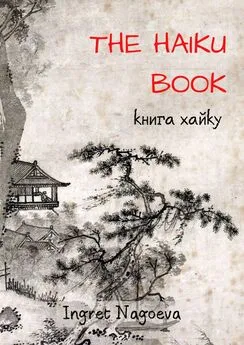Daniel Ingram - Mastering the Core Teachings of Buddha - An Unusually Hardcore Dharma Book
- Название:Mastering the Core Teachings of Buddha - An Unusually Hardcore Dharma Book
- Автор:
- Жанр:
- Издательство:Aeon Books
- Год:2009
- ISBN:9781904658405
- Рейтинг:
- Избранное:Добавить в избранное
-
Отзывы:
-
Ваша оценка:
Daniel Ingram - Mastering the Core Teachings of Buddha - An Unusually Hardcore Dharma Book краткое содержание
Mastering the Core Teachings of Buddha - An Unusually Hardcore Dharma Book - читать онлайн бесплатно полную версию (весь текст целиком)
Интервал:
Закладка:
275
Models of the Stages of Enlightenment
Worse, people often take this definition, mix it in with their own insecurities and unfortunate fear of existing or asserting themselves in the conventional sense, and then take this neurotic mixture and use it to continue to flog themselves and those around them. Please don’t do this. It is misguided and will not help you or anyone. This pop psychology definition of ego also has nothing to do with enlightenment in the formal sense, and so don’t bring it to mind when you read this chapter except to dismiss it.
Another definition of ego is the formal psychological one put forward by Freud. In this definition, ego is the moderator between the internalized parent or police of the super-ego and the primal drives of the id, those being largely for reproduction and survival. In this sense, ego is an extremely good thing and should be cultivated consciously and without restraint. This definition has to do with the more formal psychological concept of “ego strength,” a strength that is very positive and necessary for the deep and often difficult personal growth that we all want for ourselves. One of the explicit requirements for entering intensive psychoanalysis is high ego strength, the ability to face one’s reality and dark stuff without completely freaking out. Thus, eliminating this form of ego would be a disaster.
For reasons completely beyond me, the word “ego” is also used in a high mystical sense to describe the elimination of the experiential illusion of there being a special reference point as described in the chapter on the Three Characteristics in the section on no-self. One who had eliminated this form of ego, which is in this case a useless illusion, might describe their experience in this way, “In this full field of experience or manifestation, there seems to be no special or permanent spot that is observing, controlling, separated from, or subject to any other point or aspect of the rest of this causal field of experience or manifestation.”
This is the experience and realization of the arahat. Notice that this definition of ego seems to have nothing whatsoever with the other definitions of ego. This is exactly the point, and so I strongly advocate never using the word ego in the context of describing realization or the goal of the spiritual life, or at least not doing so without extensive explanation of this particularly special and uncommon usage of the 276
Models of the Stages of Enlightenment term. Those who do otherwise continue to cause an astounding amount of unrealistic, disempowering and life denying thinking in mainstream Buddhists. It is my sincere wish that the misuse of the word ego and its associated negative side effects stop immediately and forever. Back to the models…
As the Theravada Four Path Model explicitly states that realization is all about eliminating greed, hatred, restlessness, worry, etc., this is as explicitly a limited emotional range model, and, as expected, deserves some serious skepticism. In fact, this is a good time to go into what I love and despise about the Theravada. I absolutely love their emphasis on the Three Characteristics, love the astounding power of their techniques and am grateful beyond words for the maps they provided me for the territory before stream entry, however incomplete and idealized. I am profoundly grateful, at times to the point of tears, and I mean that, for the monasteries I got to sit in, for their preservation of that which is true and useful in Buddhism for 2,500 years, and for the chance to have sat with real, enlightened teachers because of their perseverance and work.
And yet, their maps of enlightenment still contain a hefty helping of scary market-driven propaganda and so much garbage that is life-denying, dangerously out of touch with what happens, and an
impediment to practice for millions of people. That the enlightened lineage holders of the modern Theravada and their ex-monk Western counterparts don’t have the balls to stand up and say, “We are deeply sorry that for 2,500 years our predecessors perpetuated this craziness to put food in their bowls and fool ignorant peasants so that they might be supported in their other useful work, and we vow to do better!” is a crying shame.
They are chained to the texts, myths and the ancient lies, seemingly doomed to indoctrinate and brainwash generation after generation of monks, practitioners and devoted followers with their delicious poison.
What a freakish paradox that the meditative techniques and
technologies that I consider among the most powerful and direct ever created should come from a tradition whose models of awakening contain some of the worst bullshit of them all. I have sat with numerous arahats who were monks or former monks who just couldn’t seem to 277
Models of the Stages of Enlightenment
overcome their indoctrination and so when giving dharma talks would habitually mix in the crap with the gold when it was obvious they knew better.
I have at times dreamed that all the teachers from all the lineages would get together in secret, come up with a plan to jointly get themselves out of the trap, and in a big formal ceremony present the truth as a new beginning, like a mass intervention, like a family gathering around an alcoholic to try to force them to reform their ways. None of them on their own seem to be fully able to take the heat, as each one that steps out of line in a direct fashion tends to get blasted, though there are exceptions, such as Jack Kornfield’s After the Ecstasy, the Laundry. Thus, I think they should all try to do it together, with Zen Masters, Lamas, Rinpoches, Tulkus, Sayadaws, Achaans, and their Western counterparts all standing side by side saying, “Enough is enough! We are declaring a new era of honest, open, realistic dharma teaching, free from sectarian fighting, free from preposterous models of awakening, and free from denial of humanity!” Enough of my ranting, back to the models…
I have no major beef with their description of stream entry. It does make people realize somewhat that rites and rituals are not the primary reason that they got enlightened, though I know of a number of practitioners that got enlightened with the help of techniques that were very ritualistic and continue to include rituals of various sorts in their practice, and why not. Stream entry does counter in some semi-intellectual way the sense that there is a permanent, separate self, though exactly how they know this is much more vague and mysterious to them than at the higher stages of awakening, though it beats the pants of any understanding of this that is pre-stream entry.
Further, they know that awakening is possible and can be done in this lifetime, assuming they know they are awakened in the first place, which strangely not all enlightened beings do. Those persons that encounter these understanding outside of established traditions may fail to recognize that what they have understood is called awakening and other names. Regardless, stream entry is known as the opening of the Dharma Eye, as contrasted with the Wisdom Eye of arahatship. These 278
Models of the Stages of Enlightenment are simply poetic metaphors for some aspects of clearly perceiving things.
My real problem with the Theravada Four Path Model comes as
soon as it starts talking about second path, i.e. the attenuation of greed and hatred or attraction and aversion, and by the time it promises eliminating these in their ordinary forms as they say occurs in third path, I think that serious critique of their language and dogma is called for.
What they are attempting to say is that the sense of the observer, center point, continuous and separate subject, watcher or however you want to describe the sense that there is some Self at the center of all this stuff that so compelling seems to divided into Self and Other is, in fact, just a bunch of sensations. When these begin to be perceived as they are, the sense of how special the center point is begins to lose its grip on perception, which begins to become wider, more inclusive, and more even in its basic treatment of phenomena. Thus, as there doesn’t seem to be so much of a this side and a that side, attempts to get away from that side when it is bad, get to that side when it is good, or just tune out to the whole thing when it is boring diminish at some basic perceptual level, and so the system functions better as it is better at realistically interpreting the information coming into it.
This is a very tough thing to talk about, and certainly doesn’t sell as well as saying, “Do these things, and you will be free from all negative emotions,” or worse, “We did these things and so are free from all negative emotions, and so you should worship us, give us donations, support our center, buy our books, give over power to us, think of us as very special or amazing, stand in awe of us, sleep with us, allow us to act like raving nutcases, etc.” I think you get the picture. Thus, what happens in reality is that segments of the process of making specific categories and patterns of the causal, sensate field into a separate “self”
is reduced and then stops. However, many of the traditions advertise eliminating negative emotions and the sensations of craving or aversion.
The two couldn’t be more different, and yet they are described as being the same.
A REVISED FOUR PATH MODEL
Here is my revised version of the Four Path Model, and this is the primary model I use when describing awakening, talking about my 279
Models of the Stages of Enlightenment
practice, and helping others practice. I think that using the original terminology and revising its definitions allows a lot of good material in the Pali Canon to be used, thus provides a link to previously done work.
However, I realize that using terminology that already has such deep cultural and dogmatic resonance may be a problem. For those who want something new, I will shortly present a rephrasing of this model that I call the Simple Model.
In the Revised Four Path Model, Stream Enterers have discovered the complete discontinuity that is called Fruition and sometimes called Nirvana or Nibbana (Sanskrit vs. Pali). This is the first of two meanings of Nirvana, with the other being Fourth Path. Stream enterers cycle through the ñanas, know that awakening or some different
understanding from the norm is possible, and yet they do not have all that different an experience of most sensations from those who are not yet stream enterers. They may correctly extrapolate a lot of good dharma insights from momentary experiences, particularly high up in High Equanimity and the three moments before a Fruition, but this is not the same as living there all the time. In fact, most stream enterers have a very hard time describing how things have changed in terms of their daily life except that they cycle and can understand the dharma in ways they never could before.
Those of Second Path have now completed a new insight cycle.
They understand the process by which enlightened beings make further progress and equate progress with further cycles of insight, which is partially true. More model-obsessed or intellectual practitioners at second path may get very into fractal models, consciousness models, enlightenment models, various integrative theories, and that sort of thing at this stage of practice. Psychological issues tend to be a bit more of a big deal during this phase, and psychological development become interesting to them in some way. By this point most people, though certainly not everyone, also have a pretty good understanding of the basics of the samatha jhanas, and these can be very fascinating. What they may be most bothered by is that cycle after cycle of practice, duality remains the predominant experience most of the time.
Читать дальшеИнтервал:
Закладка:





![Дженнифер Гюнтер - The vagina book. Главная книга для тех, у кого есть этот орган [litres]](/books/1061538/dzhennifer-gyunter-the-vagina-book-glavnaya-kniga-dl.webp)




